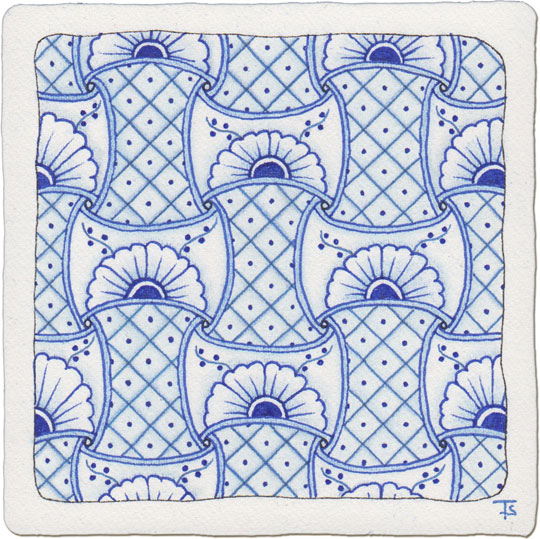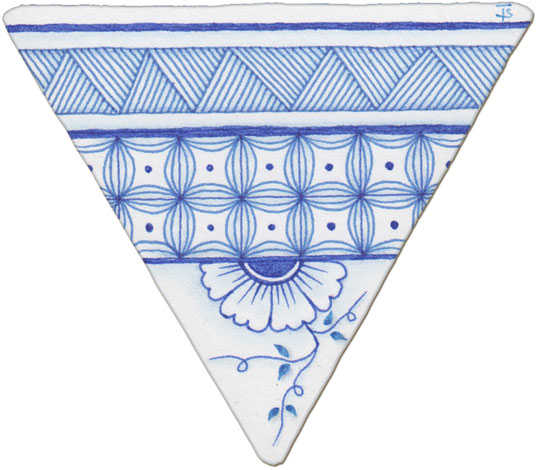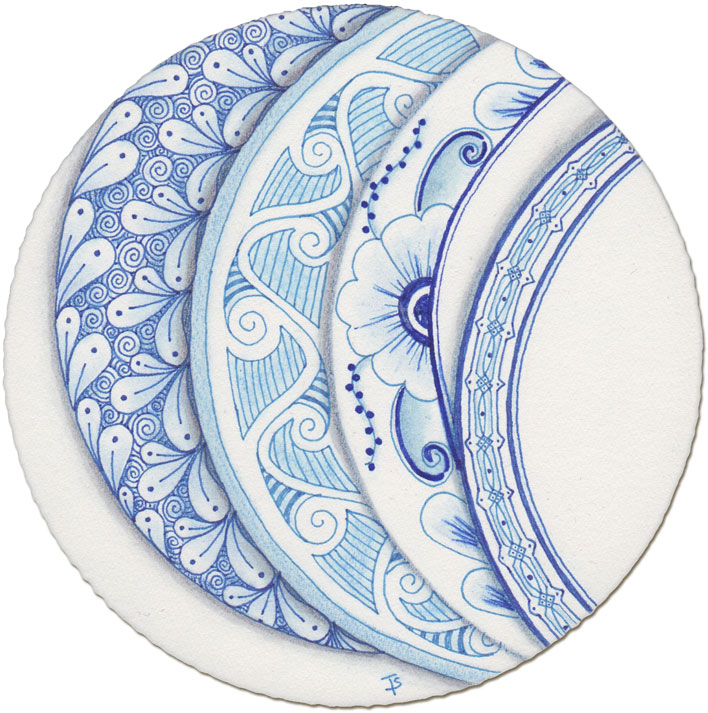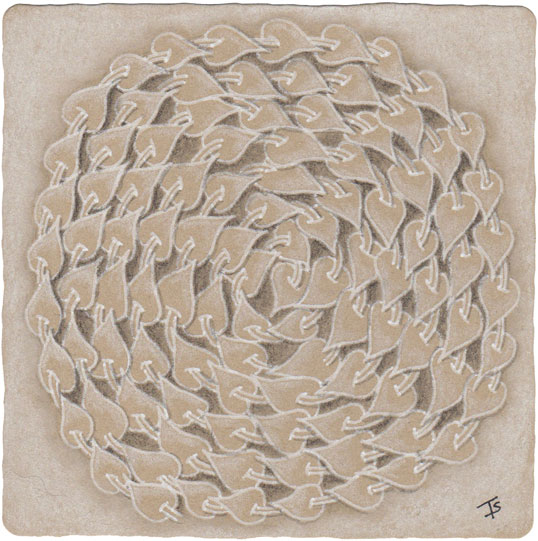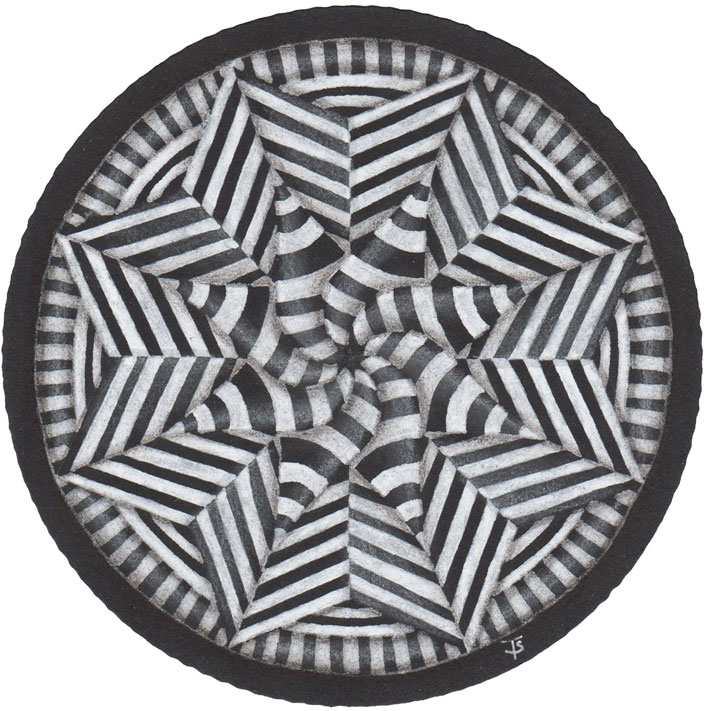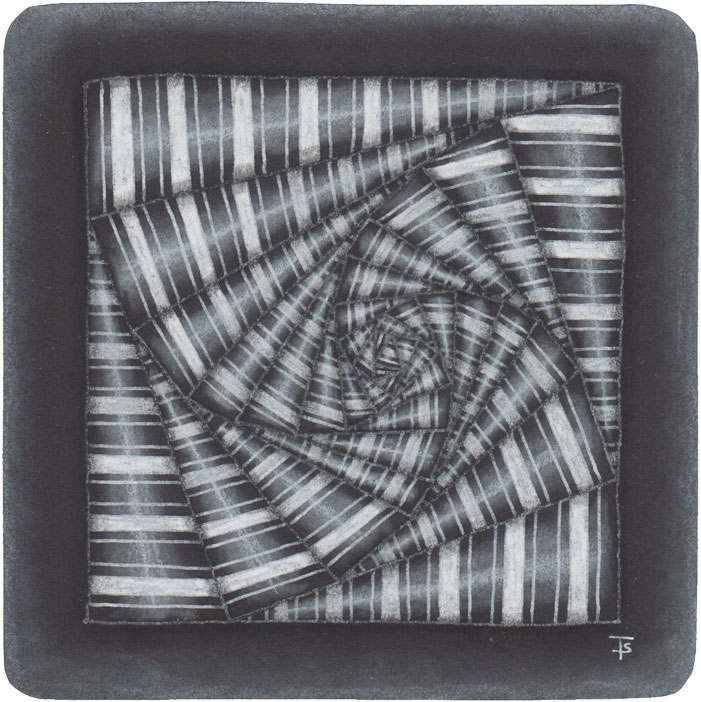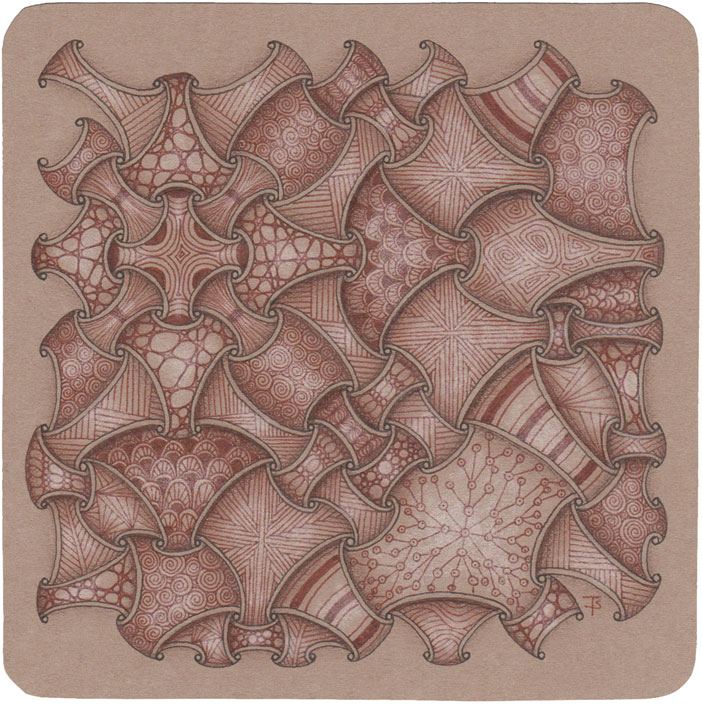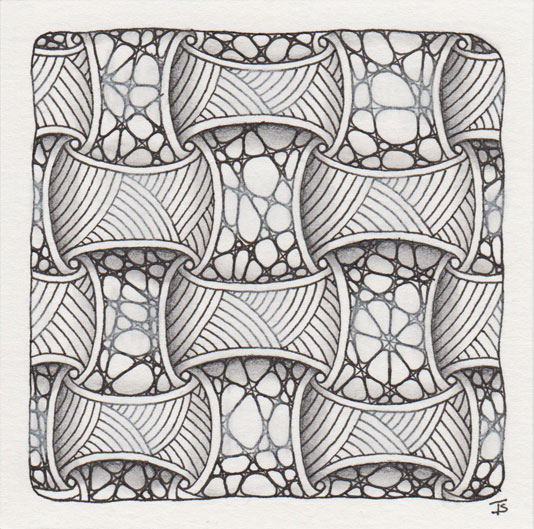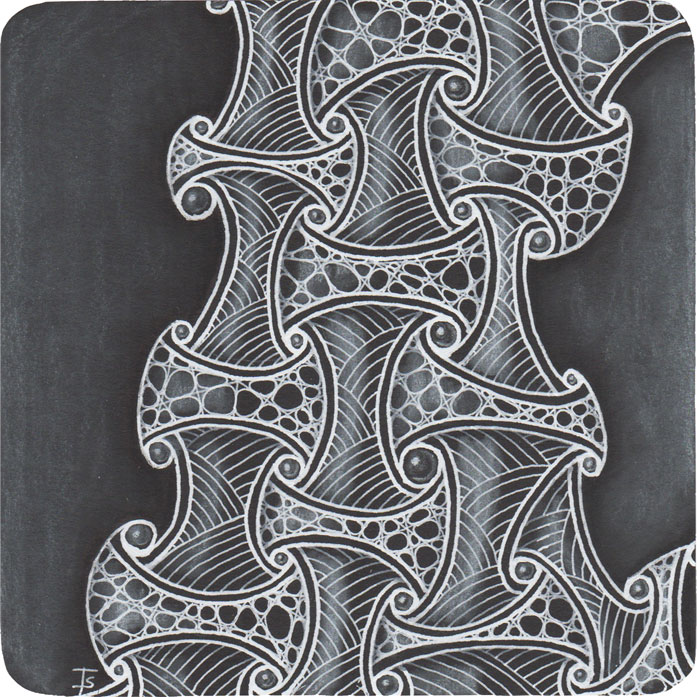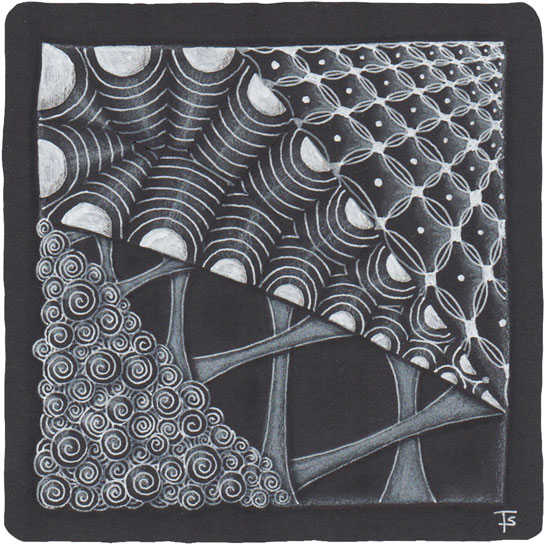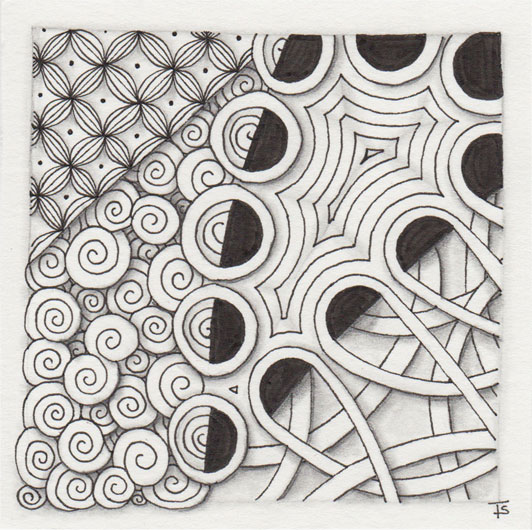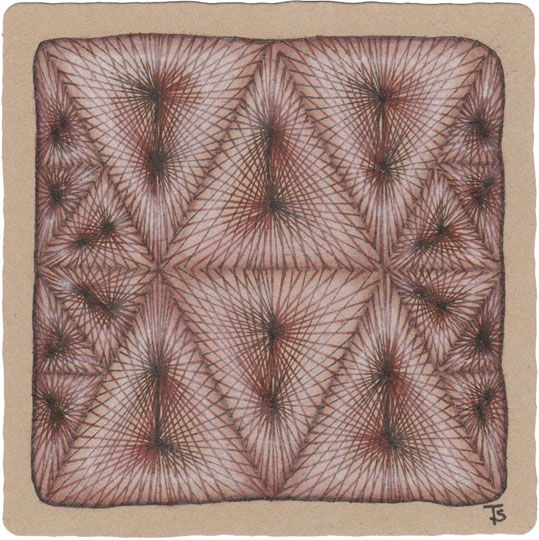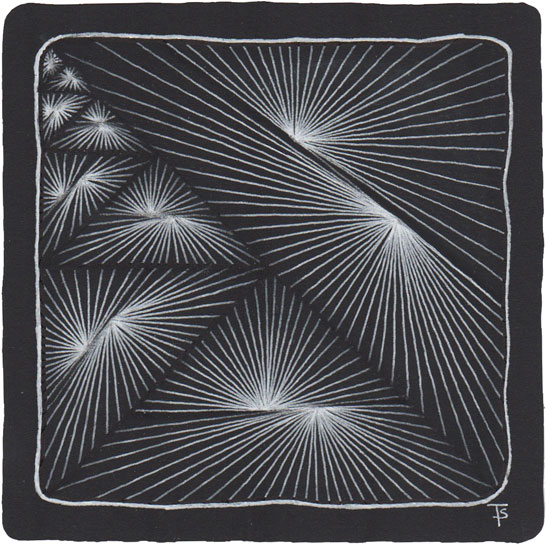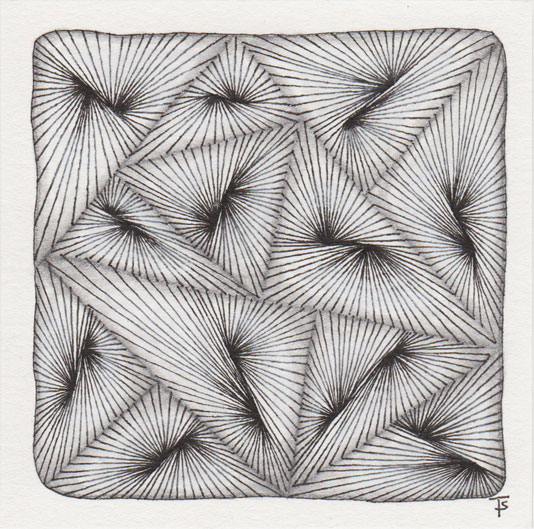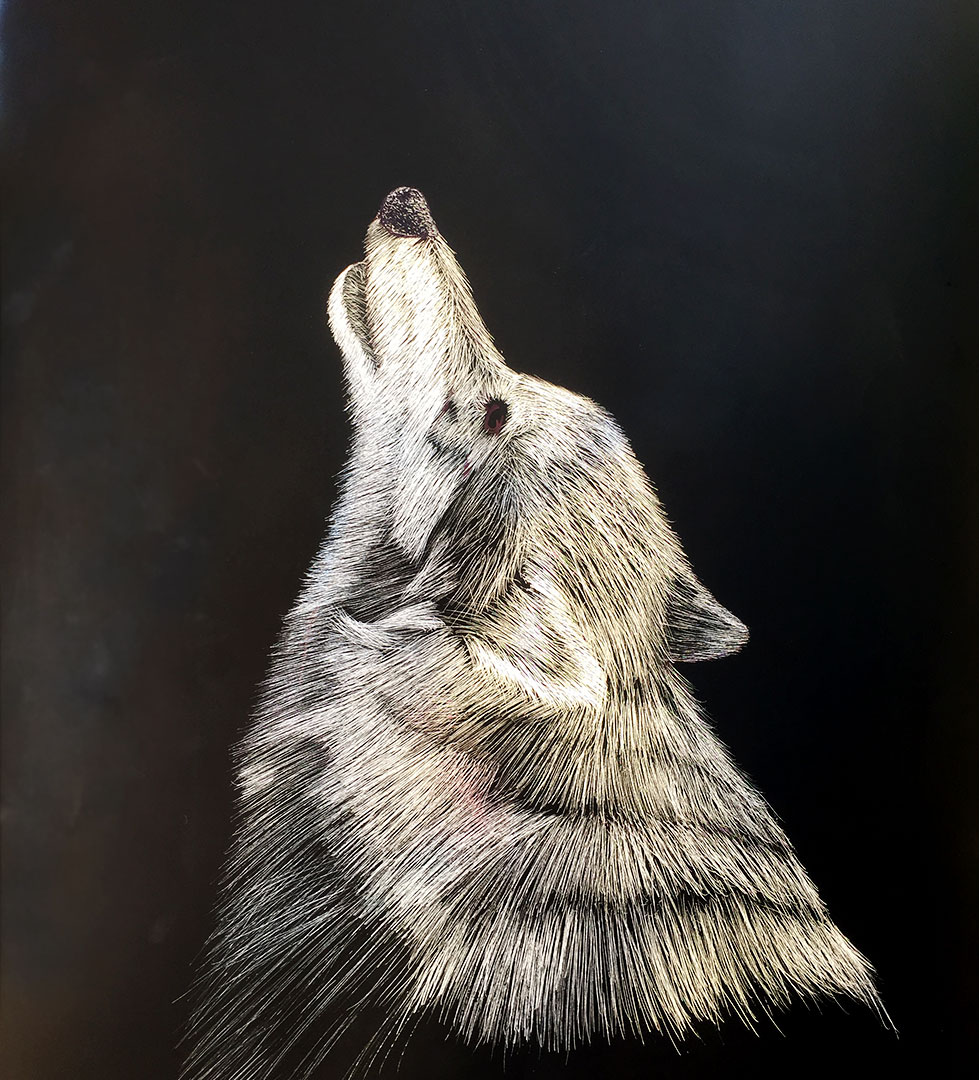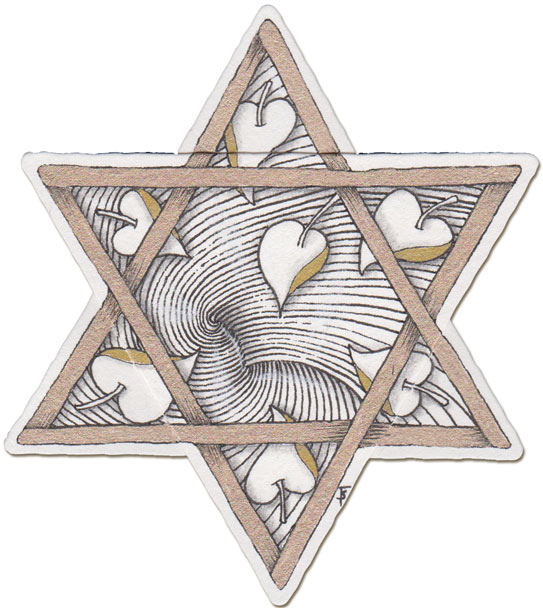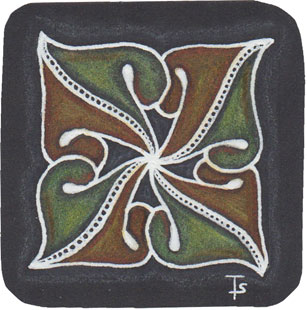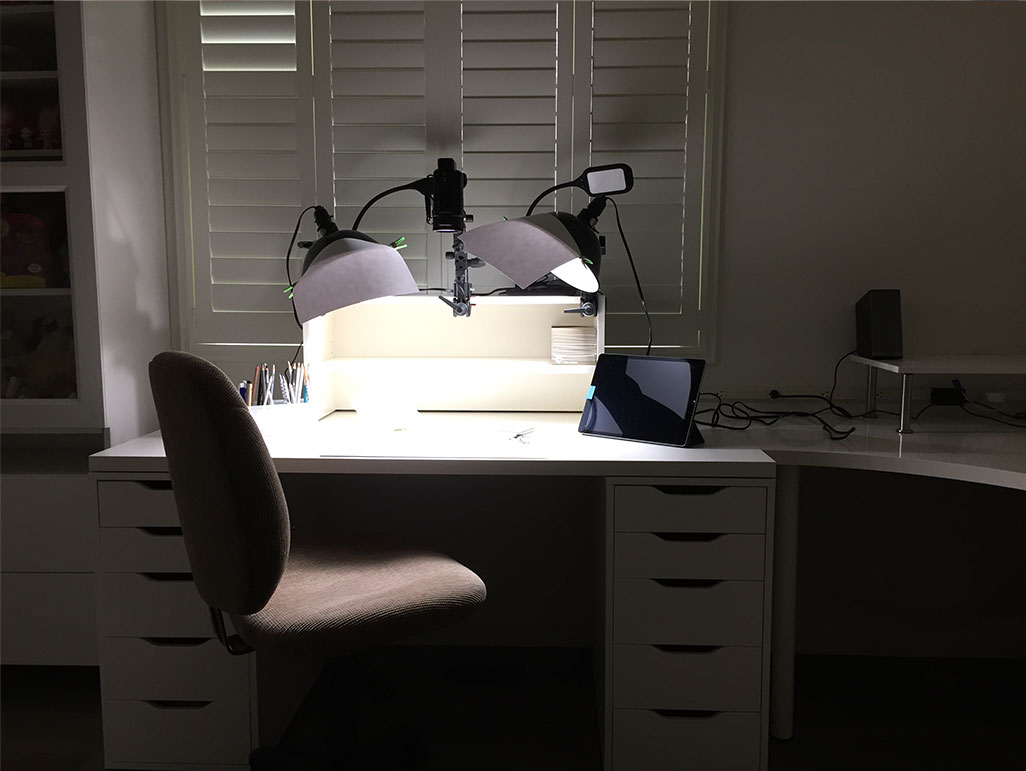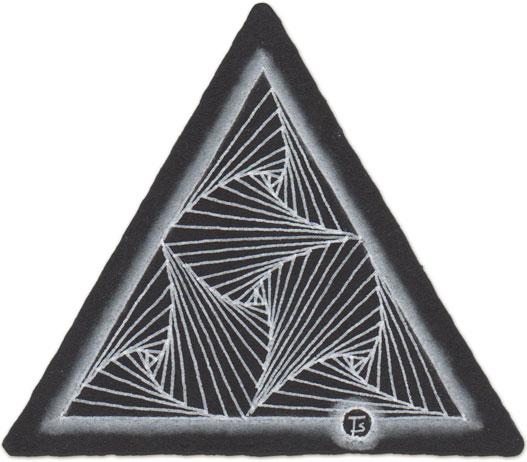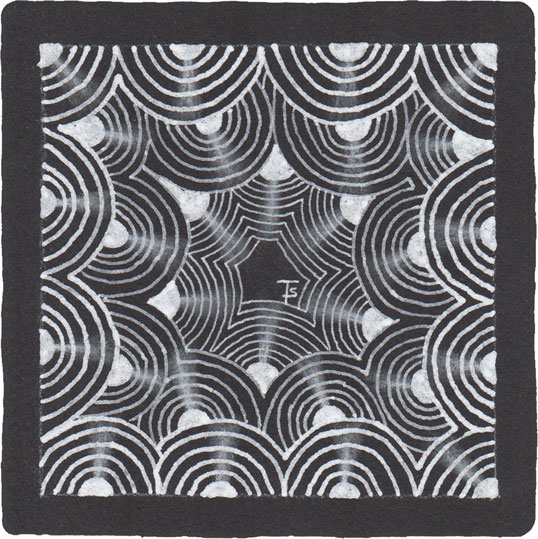This is my version of the bonus tile from the Delft Delights series. This was an interesting challenge in that I wanted each section to be the same as its partners. I like the way it came out, and the coloring. I think it’s time to experiment with some other tangles to see what else can be accomplished using this technique!
Zentangle drawn on an Official Zentangle tile using blue marking pens.
I decided to try the Delft Delights techniques on a 3Z-sized tile, thinking it would look a bit like a pottery shard. I also did a bit of research into patterns used on Delftware, so that I could find tangles that corresponded. The ones shown here I actually found on examples on the internet!
Zentangle drawn on 3Z-sized Strathmore Vellum Bristol using blue Zig and Staedtler markers. Shading done with colored pencils.
This is my first tile from the Delft Delights kit. I purchased my kit from AcadiaLaserCreations on Etsy. It was designed by Marguerite Samama , a CZT® from the Netherlands.
In addition to the instructions, the kit includes two Zendala-sized and one standard-sized Official Zentangle tiles. It does not include any pens or pencils, but a list is provided. I did not have the exact products listed, so I found the closest things I had in my supplies and used those.
This is actually the second-to-last of the Project Pack 1 series, but I saved it to do last. Unlike the other projects in this series, this one is done on a tan tile. In the video Maria shows us her daughter’s beautiful photograph of pumpkin seeds that have arranged themselves into a spiral. It was the inspiration for this exercise, where we are using Pokeleaf, drawn in a spiral pattern.
This monotangle Zendala is from Project Pack 1. In the video , Molly tells us that the pre-strung zendala in each pack was chosen at random, so there were several different designs. I didn’t have a pre-strung tile, so I copied the string from the tile at the beginning of the video.
This is the second Zendala tile that I’ve drawn on. For this one, the bigger size didn’t bother me.
This duotangle, done on a larger, apprentice-sized tile is from the 12 Days of Zentangle, Project Pack 2. For this tile, Martha instructs us in the video to draw a larger version of Paradox, which we are using as a reticula, and then filling it with Marasu fragments.
I found this very easy and relaxing to do, and I really enjoyed adding the shading and highlights. I think I’m starting to have fun doing black tiles!
For my final Crazy Huggins sampler, I cut a large, apprentice-sized tile from a new paper I got recently. I filled the tile with Crazy Huggins shapes, then filled each element with another tangle. Somewhere along the line, the design developed a mind of its own, and decided not to be symmetrical anymore. But, honestly, I think that just made it “interesting!”
This tile took quite a while to complete.
While this isn’t an exact negative of yesterday's Project Pack exercise , it’s almost there.
In this case, the tile is a standard, 3-1/2" square and the basic tangle, Huggins, isn’t the crazy version. I also changed up the highlight area in the center of each Huggins element a bit.
I’m finding that doing the black tiles is actually also improving my regular shading. Either that, or the agility of my brain is getting better at switching between the two types.
The concept for this tile is from the Zentangle Project Pack 1 series. This time we’re drawing on an Apprentice tile. Since I don’t have any, I cut an appropriately sized tile from black paper.
In this video , Molly takes us through the steps of creating a large version of Crazy Huggins and then filling each element with another tangle. The fills alternate between Crazy ‘Nzeppel and Shattuck, depending on the direction of the Huggins element.
If you saw my New Year's post , then you know that I have challenged myself to work on black tiles more frequently this year. I want to develop techniques and find the materials that work for me. For that reason, for every challenge or lesson from Eni or any other artist, I am making a black tile for the theme as well as a normal one.
To that end, this is my black tile from Eni’s Zentangle Basics lesson.
The newest Art Club video from Eni Oken's Art Club is a lesson on Zentangle Basics . Almost everyone, when they take their first Zentangle lesson from a CZT, creates a basic tile, using certain tangles that illustrate what Zentangle is all about. Eni’s video is no different, (after all, she IS a Certified Zentangle Teacher!) This is the tile I created while watching the video.
I’ve been tangling now for many years.
I thought it might be interesting to do an overlapped version of Irradial on a tan tile using brown and sepia ink.
As I did the first, brown lines, the pen was very juicy and made a large brown blog where all the lines converged. I wasn’t totally happy with it, but I decided to continue.
Then, the sepia pen was very dry, making light, almost sketchy lines and almost no blog at the convergence.
Here is Irradial done on a black tile, with a bit of fractalization. Again, I wanted to keep the string simple so that I could just enjoy drawing the tangle. I also wanted to experiment with using Copic markers to shade around each section. It didn’t quite get as dark as I wanted, so then I added black charcoal pencil around the borders and at the center line for each section.
This awesome tangle, Irradial, created by Thomas Padros is the focus tangle for this week in couple of Facebook groups! For my first attempt, I just wanted to keep it fairly simply so my string is just a bunch of triangles. I tried to vary the centers of each one somewhat by rotating the starting point, or making it closer to one edge than another.
The shading and highlighting is subtle, but it still adds a lot of dimension and shape to each section.
If you have been following this blog for a while, you’ve already seen some of Matt’s Zentangles. But I wanted to take a time out and show you another type of art that he does that is absolutely spectacular.
This is a large piece, 19"x20", done on scratch art paper. If you don’t know anything about scratch art, you can go to < Scratchboard.org and check out the tutorial there.
This tile is from Project Pack 2, The Twelve Days of Zentangle. On day eleven, Rick and Maria used 3Z tiles assembled into stars! The video shows you how to make two different stars from both black and white 3Zs. I chose to make the white one this time.
This project was a lot of fun, and not all that difficult. The biggest problem I had was drawing over the gold ink with the micron pen.
Testing 1-2-3.
I wanted a relatively simple project because I’m still shuffling stuff from the old studio to the new one.
I used a small, bijou cut from some black paper. Working on black is my specific project for this month. I chose Toodles because it’s a nice, graceful tangle that I like to draw. It also provided me with some larger areas to fill with color.
I wanted to experiment with colored pencils on black.
Setup is important.
This is my new studio set up. Yep, you’re seeing a camera in there, and photography lights. This is somewhat of a temporary set up because I’m still playing with the positioning of everything before I mount it all on an overhead bar and get that shelf off the table.
In my old studio, which I’m in the process of moving out of, the lighting was several different color temperatures, which was driving me crazy.
This is my first, official, 3Z (triangular shaped) Zentangle. These tiles are 3-1/2 inches on a side. That makes the overall drawing area smaller than a standard tile.
I did this following the video here , for Project Pack 1. I’m beginning to warm up to these black tiles. I found doing this one fun! Part of it is the design. It was easy, calming, and I really love the results!
When you are learning to tangle, Crescent Moon is one of the first that you learn. It teaches the concept of creating an “aura” near something that has already been drawn. Auras are frequently used to build repeating designs or to add emphasis or separation.
This Zentangle is from Project Pack 1.
Zentangle drawn on a black, Official Zentangle tile using three different sizes of white, Sakura gel pens. Highlighting done with white charcoal pencil.
